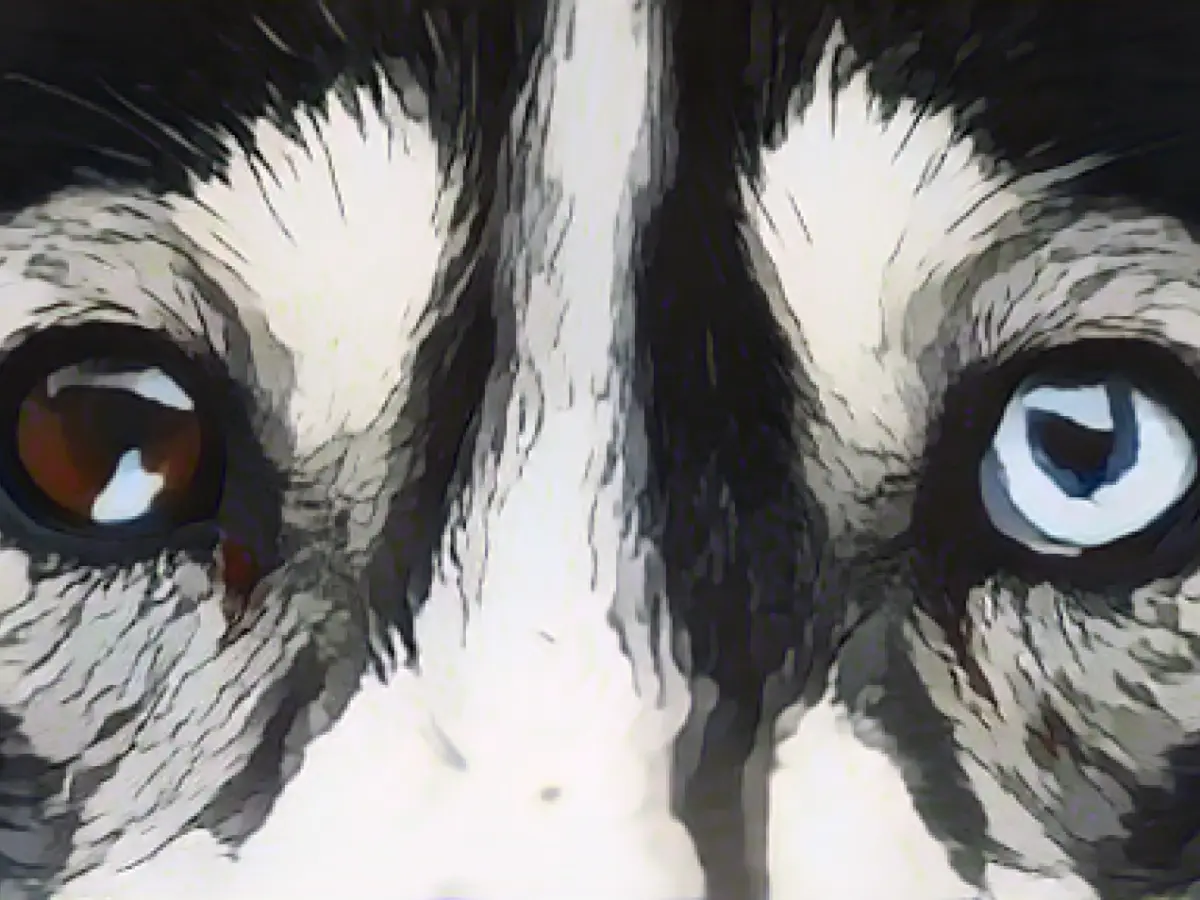Study: Domestication led to darker eyes in dogs than in wolves
The domestication of the wolf took place between 50,000 and 15,000 years ago. To this day, wolves have a lighter, yellowish iris, from which the black pupil stands out clearly. According to the study, however, humans preferred animals with darker eyes, so that this eye color became more and more prevalent in dogs.
The 30 or so dog breeds selected for the study generally have a large, dark iris in which the pupil is difficult to make out. This is apparently pleasant for humans to look at, because according to the researchers, dog owners release oxytocin when they look into their dog's eyes, a hormone that mothers also release when they look at their small child.
The researchers at Teikyo University also have a few possible explanations as to why dark eyes make dogs more lovable in the eyes of humans. For example, they refer to studies with humans and other primates, according to which a dilated large pupil is associated with more positive emotions than a constricted small pupil.
In addition, a large pupil is unconsciously associated with an immature creature that is more vulnerable and at the same time less dangerous. According to the study, if a dog's iris is very dark and the pupil is therefore barely distinguishable, this has the same effect on humans as a very large pupil. As a result, dogs with dark eyes are perceived as "weak and in need of protection".
The authors of the study tested their theory by showing test subjects pictures of twelve dogs, some with dark eyes and some with lighter eyes. The test subjects were then asked to assess the personality of each animal and indicate how friendly and how young the dog shown was. In fact, the dark-eyed dogs were rated as "friendlier and younger", according to the study.
However, the authors concede that the significance of their study is limited, for example because they only included a few of the numerous dog breeds. In addition, the habit effect could also play a role, meaning that dark-eyed dogs are rated more positively because they are more common and their appearance is therefore more familiar.
Read also:
- This will change in December
- Attacks on ships in the Red Sea: shipping companies avoid important trade route
- Houthi rebels want to launch further attacks despite international coalition
- USA forms military coalition against Houthi attacks on ships in the Red Sea
- The study suggests that humans preferred dogs with darker eyes during the process of domestication, as seen in wolves which typically have lighter, yellowish irises.
- The high release of oxytocin in dog owners when gazing into their pet's dark eyes is similar to the hormone release mothers experince when looking at their child.
- According to the researchers at Teikyo University, the preference for dogs with dark eyes might be due to the association with positive emotions and vulnerability.
- Studies with humans and other primates have shown that a large, dilated pupil is often linked to more positive emotions compared to a small, constricted one.
- The study results indicate that dogs with dark eyes are perceived as friendlier and younger by humans, similar to the effect of a large pupil in another animal.
- Despite the study's limitations, such as a small pool of dog breeds and the possibility of the habit effect, the results suggest that dark eyes may positively influence people's perception of dogs.
- Oxytocin, a hormone commonly released in response to caring activities, may play a significant role in the bond between humans and their pets with darker eye color.
- At the Royal Society, researchers presented findings indicating that the domestication of the wolf led to the prevalence of darker eyes in dogs, potentially impacting human perception and connection with canines.
Source: www.stern.de







